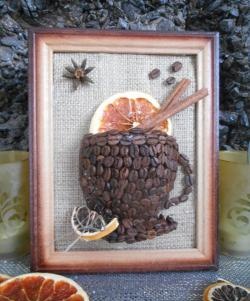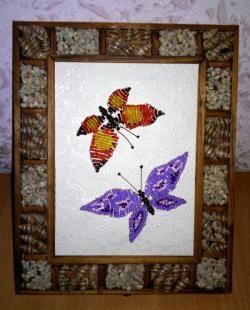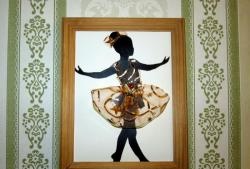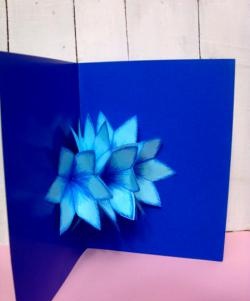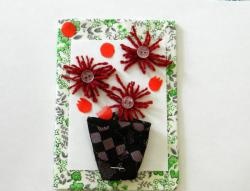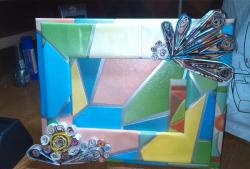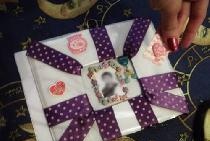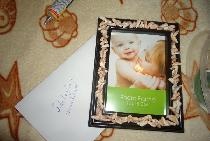Postcard panel with 3D effect
Panels are used in interior decoration to fill the walls. There are several types: carved, wooden, artistic, marine themed and others. Most often, a panel with flowers is made, which organically fits into the decor of the room.
To make panels from postcards, it is better to use postcards depicting landscapes, flowers, and various objects. It is not advisable to take images with people or animals.
Materials and tools:
• two identical postcards;
• PVA glue";
• cardboard;
• Photo frame;
• ruler;
• pencil;
• narrow tape;
• colored paper;
• scissors.
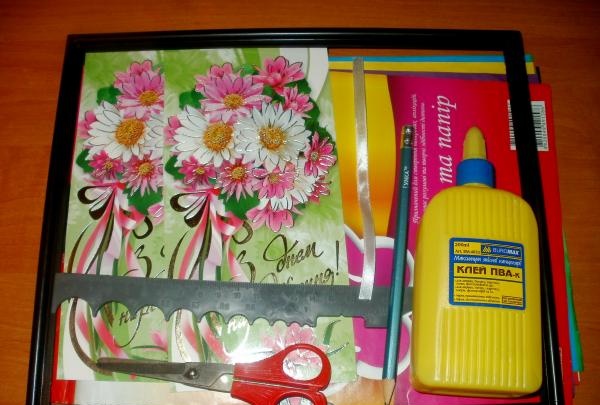
1. First we make markings on the postcards. We turn the first card over and draw lines on the back side with a pencil under a ruler. The distance between them is 5 mm. You can make the stripes wider; in this work, a width of 5 mm to 10 mm is allowed. The card needs to increase in width, so we draw the stripes vertically. If you want the card to become longer, then you need to make horizontal stripes. Having drawn the first postcard, we mark the second one in a similar way.
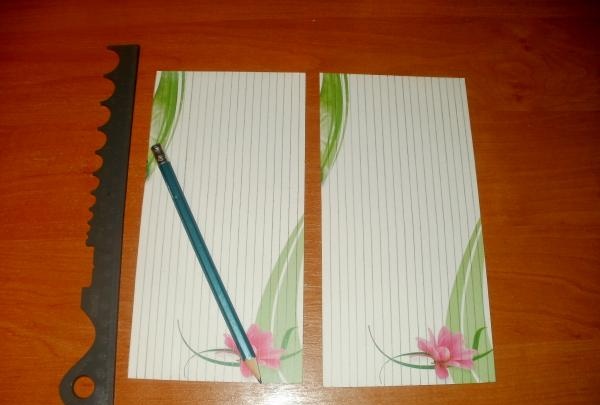
2. Use a pencil to number the stripes. First, on the first postcard we write the numbers 1, 2, 3, 4 and so on until the last strip.Then we put the same numbers on the second postcard. We start writing numbers on the left side of the cards.
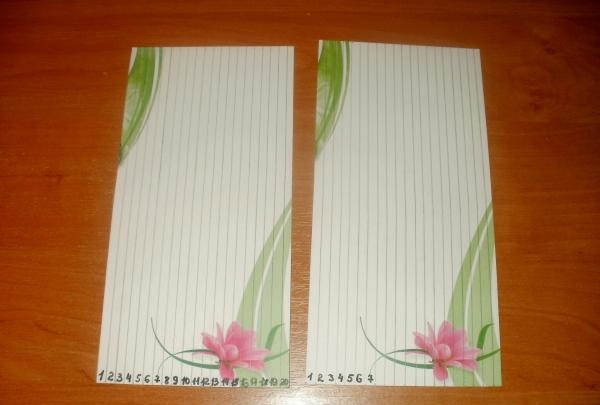
3. Carefully and precisely along the lines with scissors, cut the cards. (If you do not cut it evenly, you will end up with a panel with cracks.) Place the cut strips in two piles so that they do not mix.
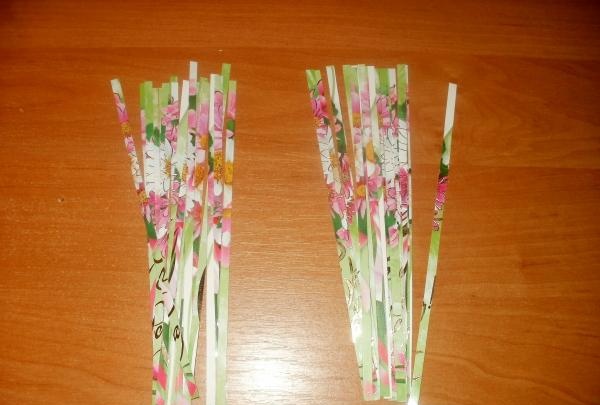
4. Now lay out the stripes. First we put strip No. 1 from the first postcard and strip No. 1 from the second postcard. Then we lay out No. 2 and 2, No. 3 and 3 and until the last number.
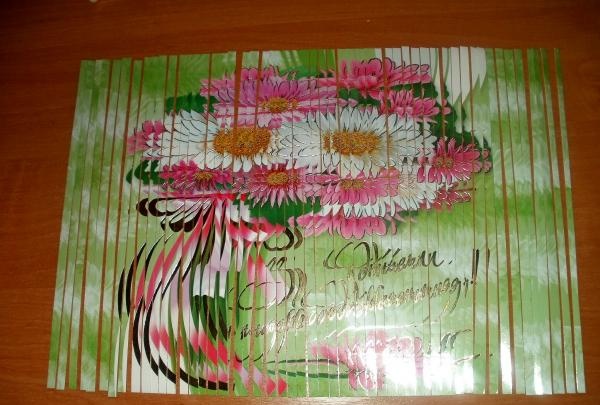
5. We look at the panel and, if necessary, remove excess stripes. In this case, it is necessary to remove a couple of strips along the edges of the bouquet.
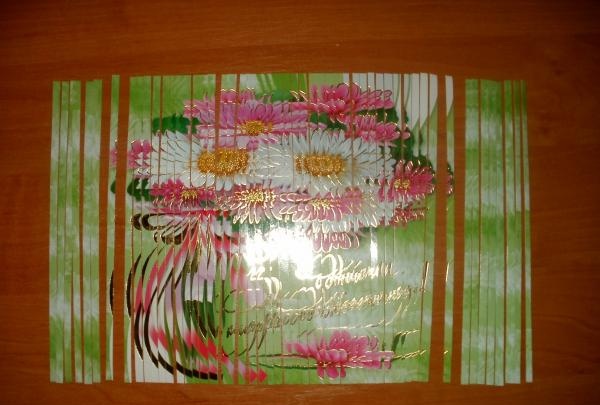
6. Let's start gluing the strips. We take cardboard of the appropriate size and glue it on it in order, starting with the first stripes. We make sure that the strips lie evenly, do not go over the edge, and there is no gap between them.
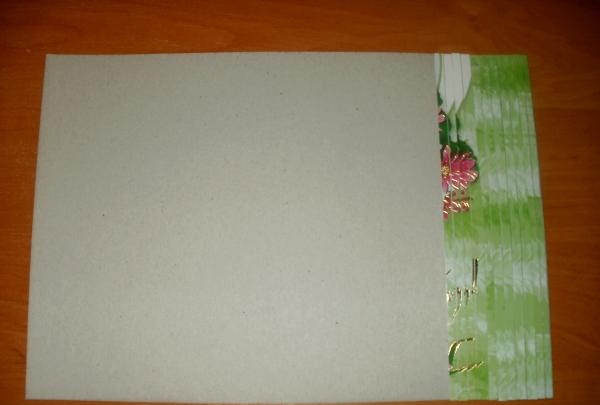
7. Apply glue to the cardboard, as wide as two strips. Then apply the strip and press. Be sure to wipe the glue from the strips with a damp sponge, otherwise the dried glue will be visible and ruin the appearance of the panel.
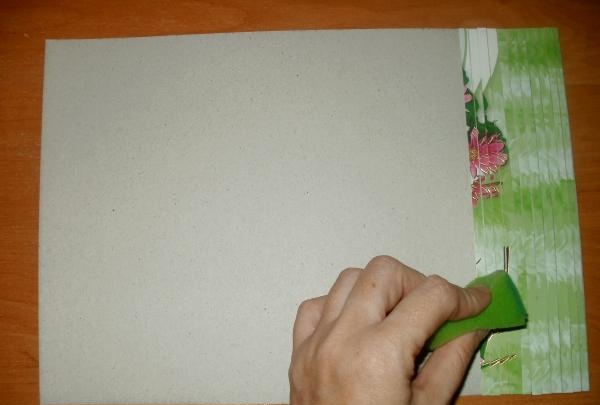
8. Glue all the strips to the end. Trim off excess cardboard. It turned out to be a double postcard. You can also use three or four postcards to create a panel, then it will come out much larger.
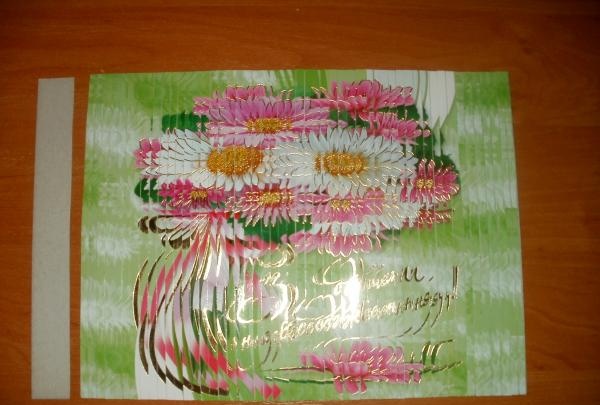
9. To ensure that the panel is even, place the completed work under a press until it dries completely.
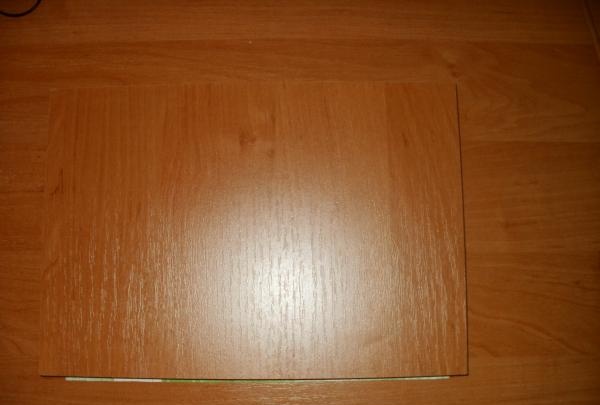
10. We insert the finished panel into a photo frame. You can use any frame: wood, plastic, metal or another.
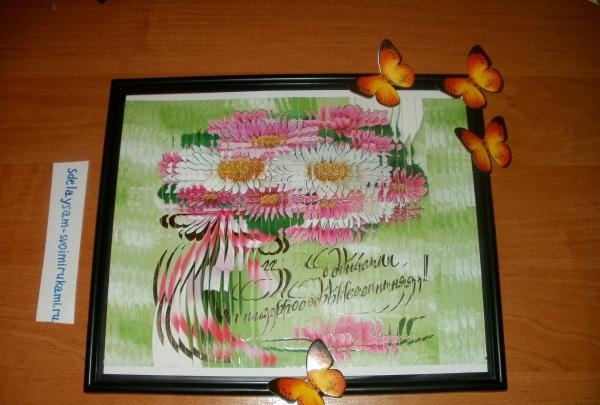
11. You can do without a photo frame. It's not difficult to make your own paper frame. We cut out elements for the frame from yellow paper and glue them along the edges of the panel. We make a loop from a narrow ribbon or thread and attach it to the frame with glue (or tape). Such a panel can be placed on a shelf, or you can decorate a wall with it.
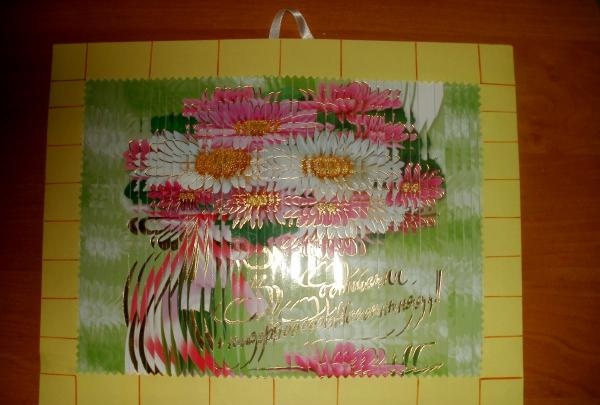
This is how a panel is made from two identical postcards with a 3D effect. Using this technique you can make panels on any theme.
To make panels from postcards, it is better to use postcards depicting landscapes, flowers, and various objects. It is not advisable to take images with people or animals.
Materials and tools:
• two identical postcards;
• PVA glue";
• cardboard;
• Photo frame;
• ruler;
• pencil;
• narrow tape;
• colored paper;
• scissors.

1. First we make markings on the postcards. We turn the first card over and draw lines on the back side with a pencil under a ruler. The distance between them is 5 mm. You can make the stripes wider; in this work, a width of 5 mm to 10 mm is allowed. The card needs to increase in width, so we draw the stripes vertically. If you want the card to become longer, then you need to make horizontal stripes. Having drawn the first postcard, we mark the second one in a similar way.

2. Use a pencil to number the stripes. First, on the first postcard we write the numbers 1, 2, 3, 4 and so on until the last strip.Then we put the same numbers on the second postcard. We start writing numbers on the left side of the cards.

3. Carefully and precisely along the lines with scissors, cut the cards. (If you do not cut it evenly, you will end up with a panel with cracks.) Place the cut strips in two piles so that they do not mix.

4. Now lay out the stripes. First we put strip No. 1 from the first postcard and strip No. 1 from the second postcard. Then we lay out No. 2 and 2, No. 3 and 3 and until the last number.

5. We look at the panel and, if necessary, remove excess stripes. In this case, it is necessary to remove a couple of strips along the edges of the bouquet.

6. Let's start gluing the strips. We take cardboard of the appropriate size and glue it on it in order, starting with the first stripes. We make sure that the strips lie evenly, do not go over the edge, and there is no gap between them.

7. Apply glue to the cardboard, as wide as two strips. Then apply the strip and press. Be sure to wipe the glue from the strips with a damp sponge, otherwise the dried glue will be visible and ruin the appearance of the panel.

8. Glue all the strips to the end. Trim off excess cardboard. It turned out to be a double postcard. You can also use three or four postcards to create a panel, then it will come out much larger.

9. To ensure that the panel is even, place the completed work under a press until it dries completely.

10. We insert the finished panel into a photo frame. You can use any frame: wood, plastic, metal or another.

11. You can do without a photo frame. It's not difficult to make your own paper frame. We cut out elements for the frame from yellow paper and glue them along the edges of the panel. We make a loop from a narrow ribbon or thread and attach it to the frame with glue (or tape). Such a panel can be placed on a shelf, or you can decorate a wall with it.

This is how a panel is made from two identical postcards with a 3D effect. Using this technique you can make panels on any theme.
Similar master classes
Particularly interesting
Comments (0)


